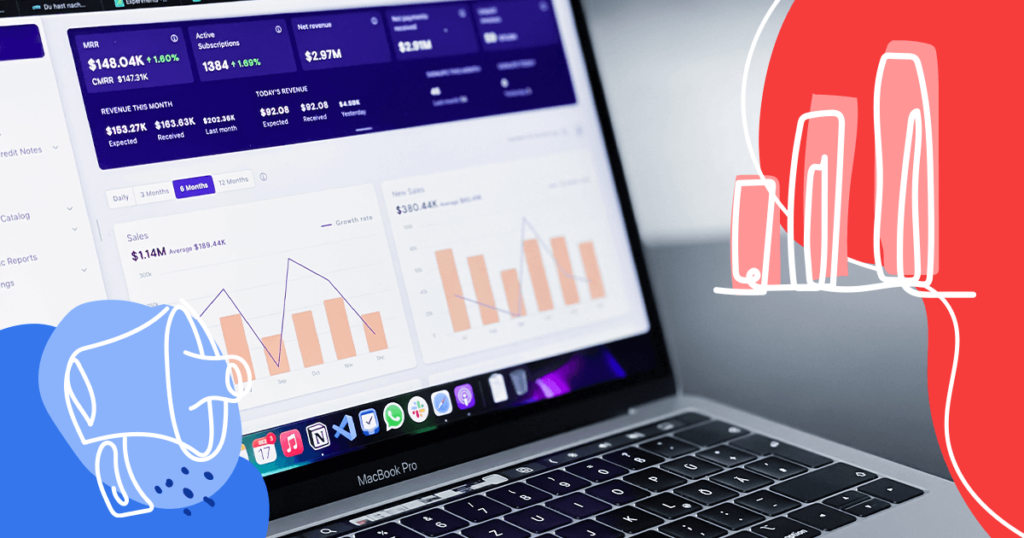What’s the biggest difference between marketing that makes money and marketing that’s just a huge waste of time? “It all comes down to knowing a few simple, but incredibly important marketing analytics and metrics,” says Adam Erhart.
Other experts back up this assertion. Neil Patel is one of the top influencers on the web. He states, “Just like making a recipe in the dark is unnecessary and reckless, so too is ignoring the invaluable marketing data.“
Elissa Hudson is one of HubSpot’s senior marketing managers. She explains that using digital marketing analytics can “turn your business objectives into measurable outcomes that support your bottom line.“
Naturally, the first step in learning to use digital marketing analytics is to understand them. You need to know what the numbers mean in order to use them to make informed decisions.
What is Digital Marketing?
Digital marketing is any form of online marketing. It includes internet ads, social media marketing, SEO, and content marketing. It also encompasses email and SMS promotion.
In short, you need to regularly analyze any type of marketing you use on the internet. The more data you source, the more accurate your decisions should be.
Digital Marketing Analytics: What To Look For
You have to look at multiple metrics to get all the data you need. They include:
- Budget analytics: “The first metric you want to pay attention to is budget,” Erhart explains. You need to make sure your ROI exceeds your expenses. Check cost per visitor, revenue per visitor, cost per acquisition, and cost per conversion.
- Total visits: How many people visit your site or social media pages within certain time periods? Even hourly time frames can help you see which times of day are best for posting new content.
- Traffic by channel: Where are your visitors coming from?
- Traffic by location: Are most of your visitors coming from a specific area? This may indicate which demographic is most interested in your business.
- Visitor types: What percentage of visitors are newcomers? What is the percentage of return visits?
- Site interactions: This is an important aspect of content marketing analytics. You need to know what type of content attracts the most people to your site. You also need to know which content generates the most referrals to sales pages.
- Bounce and exit rates: How many visitors leave your website without taking action? How many people leave the site from a specific page? If your landing page has a high bounce rate, it may need a better call to action.
These forms of data are key performance indicators (KPIs). Each one tells you something vital about your marketing efforts. Excluding any form of data will leave holes in your data-driven marketing plan.
The Four Types of Digital Marketing Analytics
Collecting data is the first step. Now you need to know what to do with it.
Harvard Business School lists four types of digital marketing analytics. These analytics aren’t about data. Rather, they tell you how to use your data to understand and improve results.
Descriptive analytics
Descriptive analytics involves the collection of your raw data. This tells you what has happened in the past.
The past could be last year, last month, or last week. It could be yesterday or even a few hours ago. If it has already happened, it’s part of your descriptive analytics.
One aspect of descriptive analytics is the comparison of past events with other past events. For instance, how do this year’s January sales compare to sales during last January? How does morning website traffic compare to afternoon traffic?
You can also compare past demographic activity. Are sales to seniors rising or falling? Are young people or female customers spending as much money on your site as they did last month?
Diagnostic analytics
Diagnostic analytics aren’t about the numbers. They’re about why your numbers are the way they are.
Are site visits and sales down from last month? You’ll want to look at these analytics to see if it’s a seasonal trend.
Did your bounce rate go up significantly in the last six months? If so, check your content and links to see what you need to change.
At the same time, this type of analytics isn’t only about problems. You also need to analyze the good news.
If, for instance, your site visits increased by 50 percent this month, you’ll want to know why. Is it a new piece or type of content? Or, is it improved social media marketing or a change in your Google Ads campaign?
Is a certain audience sharing your content more than it did a year ago? Find out why to leverage this trend to its fullest potential.
Predictive analytics
Predictive analytics lets you use raw data and diagnostic analysis to identify patterns and trends. Doing so can help you predict likely future events and take action based on these events.
For example, your data may show that site visits go up 50 percent during December. Diagnostics might reveal that this happens because one of your products is a popular holiday gift. Predictive analytics help you see how many visits you can expect during December in the coming years.
You can also use predictive analytics to find out more about your audience.
Is a certain age group spending the most money on your products? Are people in a particular location your best customers? Use the data to predict where sales will rise and then take action based on your analysis.
Bear in mind that predictive analysis isn’t about predicting the future. You’re not looking into a crystal ball to see what will happen one, five, or 10 years from now.
Competition, market trends, world events and other factors can affect what happens in the future. However, what you learn from predictive analysis never goes to waste. That’s because it helps you see what to expect if you take (or don’t take) certain courses of action.
Prescriptive analysis
Prescriptive analysis asks, “What do we do next?”
It’s great to make data-based charts and pie graphs. It’s interesting to learn more about your audience. However, you have to actually use your data to make decisions if you want to grow your business.
Are sales to a particular niche audience on the rise? You may want to develop targeted content and online ad campaigns that appeal to this audience. You can also use this data in product creation decisions.
Do sales rise during a particular season? If so, put your best foot forward at this time. Create targeted content and run seasonal ads to improve your conversion rate.
Product pages with high exit rates may need more photos or clearer explanations. On the other hand, content with a low bounce rate should be studied and replicated to maximize results. For example, if visitors love your how-to pages, turning them into videos should boost your conversion rate.
Collecting marketing metrics and using marketing analytics to make decisions is an ongoing job. Never let up on gathering data.
Set aside time at regular intervals to review the data you collect. Perform diagnostic, predictive, and prescriptive analyses on this data.
As you use data to tweak your marketing campaign, compare the results to your old data. Doing so helps you optimize your digital marketing efforts. It can also enable you to save money and improve customer service.
Partner with the Experts
Expert help is often in order if you need to make changes to your marketing strategy. You may need a new graphic designer to create attractive visuals. Influencers can boost your social media marketing while SEO experts help you improve a Google Ads campaign.
In most cases, changes to your digital marketing plan will involve content creation. Every business needs winning content for a website, blog, and social media platforms.
Do you need new landing pages, product pages, blog posts, articles, or an ebook? If so, you will likely also need help from content creation experts. That’s where WriterAccess comes into the picture.
WriterAccess is a platform for vetted, experienced content writers. It’s home to experts of all ages, from all industries. The content is 100% unique and human-written.
We use AI to pair you with the perfect writer for any project. We also offer a plethora of tools that help you identify the types of content you need. Our team works with you to ensure projects meet or exceed your expectations.
A data-powered marketing campaign can grow any business. Check out our 14-day free trial to find out why companies around the world team up with us.



![[ROCK NA] [EBOOK SEO] Complete Guide](https://rockcontent.com/wp-content/uploads/2024/06/banner_Search-Engine-Optimization.png)






